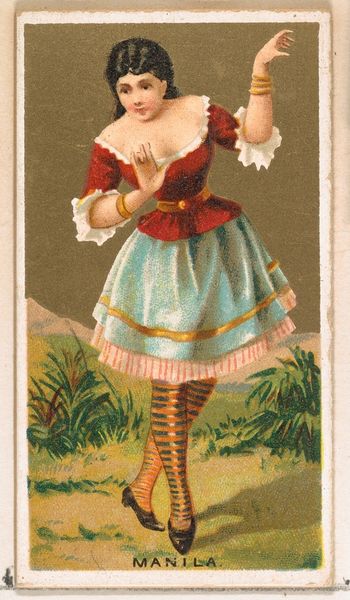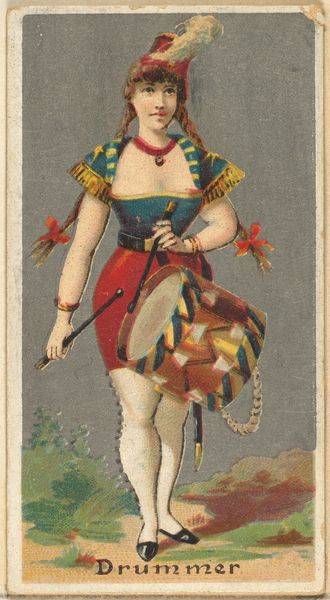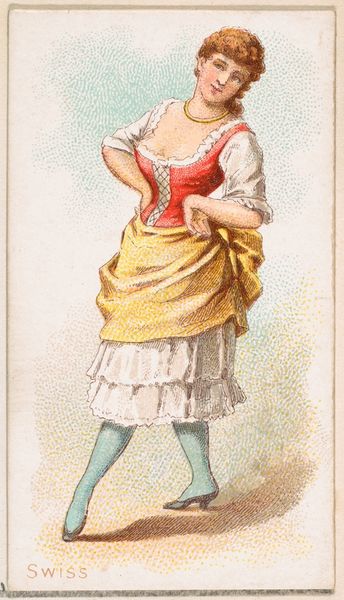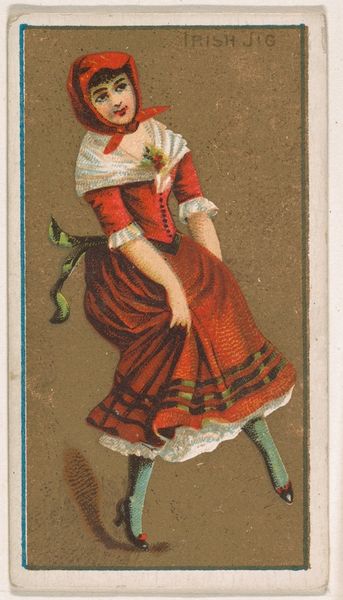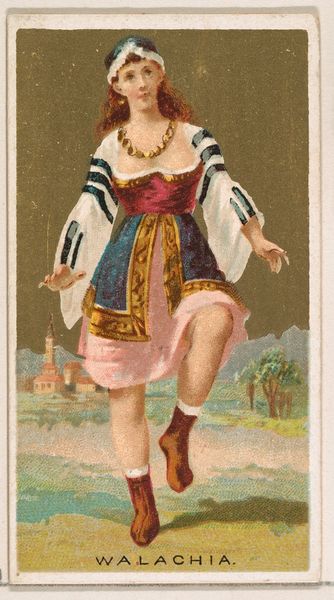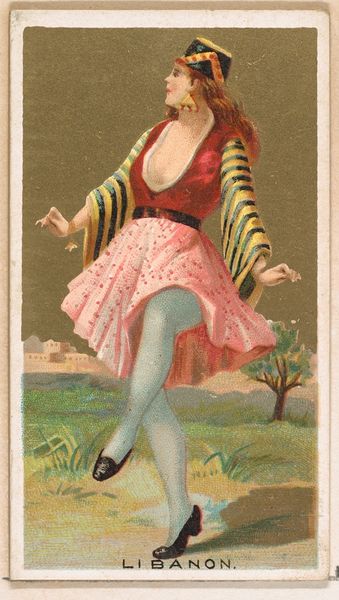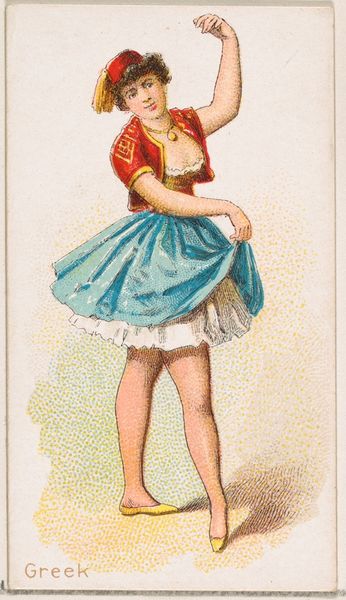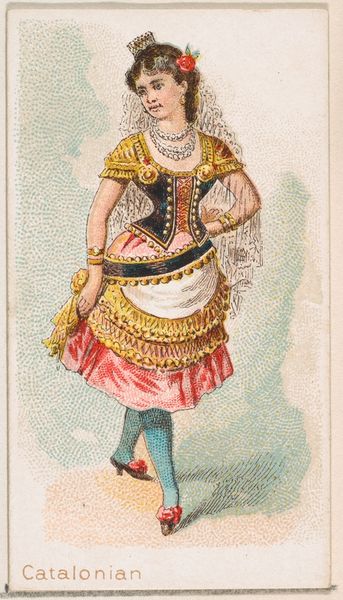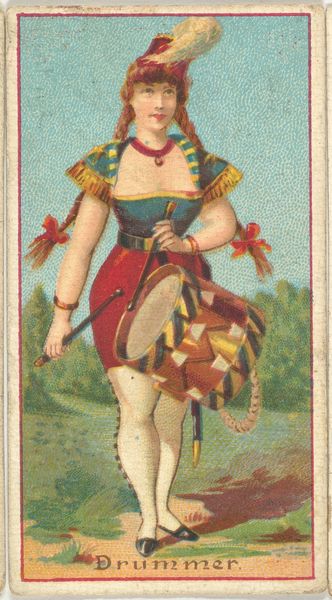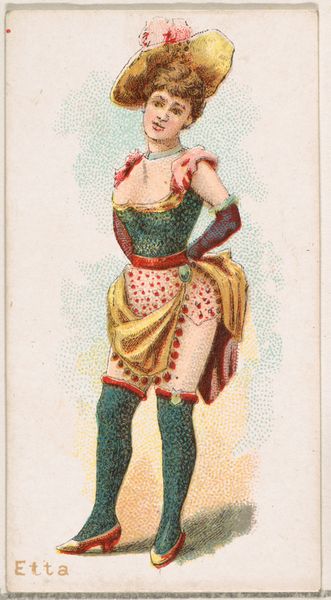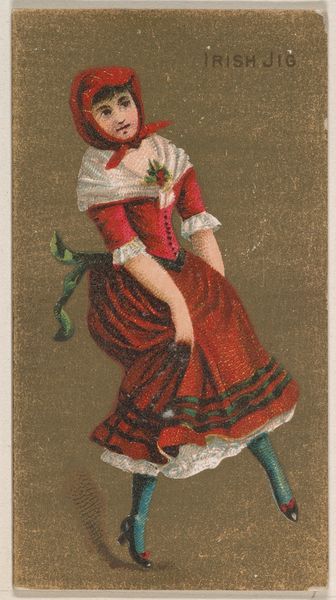
Andalusia, from the Dancing Girls of the World series (N185) issued by Wm. S. Kimball & Co. 1889
0:00
0:00
drawing, print
#
drawing
#
art-nouveau
# print
#
figuration
#
orientalism
#
genre-painting
#
realism
Dimensions: Sheet: 2 11/16 × 1 1/2 in. (6.8 × 3.8 cm)
Copyright: Public Domain
Curator: Ah, here we have "Andalusia," a print from the "Dancing Girls of the World" series, circa 1889, by Wm. S. Kimball & Co. Editor: My initial reaction? It's undeniably captivating, the vibrant color blocking between the dancer’s red bodice and striking yellow skirt pulls my gaze instantly, not to mention the miniature scale is striking for such bold hues. Curator: Yes, it's intriguing how they've played with chromatic tension. Consider how the black lace trim of the skirt, how its visual weight creates balance to the upper area of the figure, contrasting with the ground in a compelling manner. Editor: Indeed, lace trimming, gesture, the location in the background - these conjure all sorts of historical echoes. I can’t help but wonder how audiences might have seen her then, a mixture of fascination with other cultures. This imagery reflects a very particular romanticization and exotification of the foreign woman, no? Curator: Precisely. You are pointing out what contemporaries would have known – what they believed the dancer, this visual signifier, represented as it intersected with class and expectations. The visual strategy employed flattens pictorial space but reinforces a hierarchy nonetheless. We read the composition and appreciate its implied movement from gesture and clothing, but the series title suggests it may be a part of an ongoing orientalist trend in 19th century visual culture, with real socio-cultural impact. Editor: Very astute observations on both the visual components and cultural impact. Looked at with today’s values and norms, it could perhaps also reflect appropriation or even exoticization of certain cultures and feminine norms in this representation? What sort of visual legacy does this imprint of "Andalusia" contribute to, do you think? Curator: Perhaps it perpetuates particular perceptions of cultural identities, certainly. This is something that an iconographic reading illuminates beyond formal assessment. A potent reminder that artworks aren't viewed in vacuums; their interpretations depend greatly on cultural context. Editor: Indeed. It shows us how images evolve in our mind and influence it across generations – a rather powerful message captured within this small print.
Comments
No comments
Be the first to comment and join the conversation on the ultimate creative platform.

